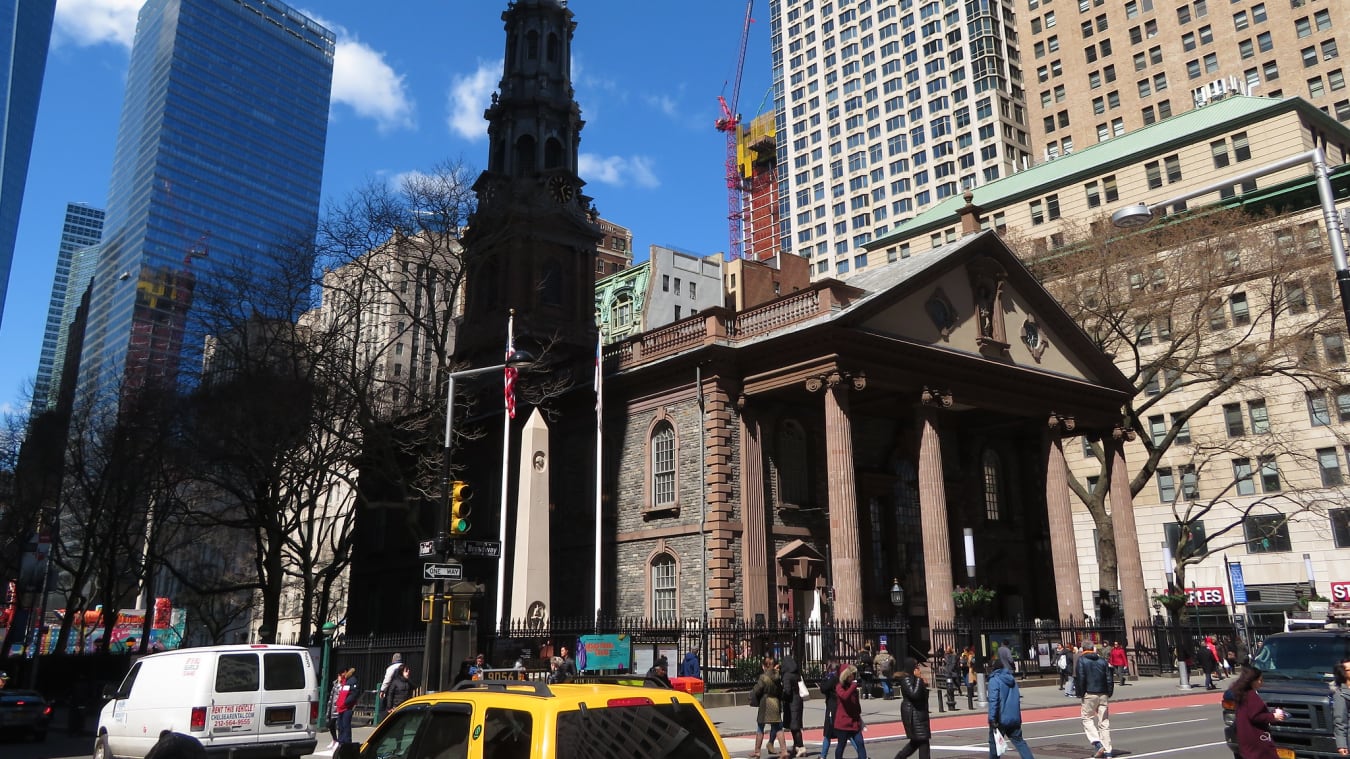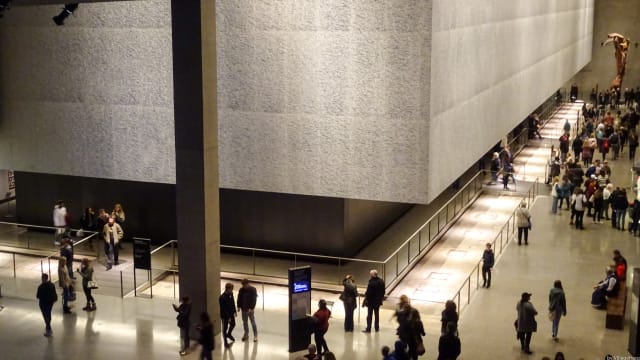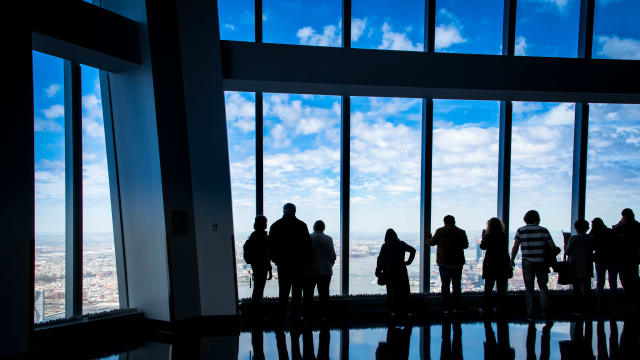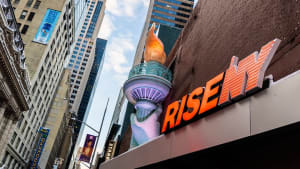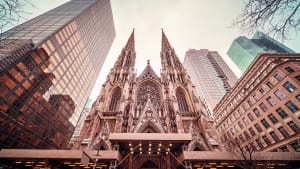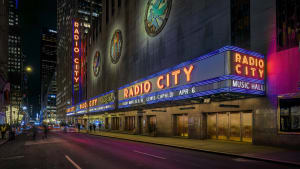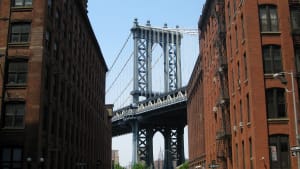St. Paul's Chapel
Step into the oldest surviving church in Manhattan and witness a symbol of resilience that has stood the test of time. St. Paul's Chapel, a beacon of hope during America's darkest hours, invites you to explore its rich history and enduring spirit. From George Washington's prayers to its miraculous survival on 9/11, this iconic landmark offers a powerful glimpse into New York's indomitable soul.
St. Paul's Chapel in a nutshell…
St. Paul’s Chapel is the oldest surviving church in Manhattan, known for its historical significance and role in the aftermath of 9/11.
Location: 209 Broadway, Lower Manhattan, New York City
Transportation: Accessible via subway (2, 3, 4, 5 trains to Fulton St.), multiple bus lines, and Hop-on Hop-off buses
Tickets: Free admission
Visiting Hours: Monday to Saturday 10:00 am - 6:00 pm, Sunday 8:00 am - 6:00 pm
Nestled in the heart of Lower Manhattan, St. Paul’s Chapel stands as a testament to New York’s resilience and compassion. Founded in 1766, this historic church has weathered centuries of change, becoming an integral part of the city’s fabric. Its significance, however, transcends its age, as it played a pivotal role in one of America’s most challenging moments.
In the wake of the September 11, 2001 attacks, St. Paul’s Chapel emerged as an unexpected hero. Despite its proximity to the World Trade Center, the chapel miraculously survived with minimal damage. For over nine months following the tragedy, it transformed into a sanctuary for emergency responders and volunteers, offering solace, sustenance, and a moment of peace amidst the chaos.
Today, St. Paul’s Chapel stands not only as a place of worship but as a living memorial. It honors the courage and compassion that emerged from the ashes of 9/11, welcoming visitors to reflect on the past and find inspiration for the future. As you step through its doors, you’ll be transported through time, experiencing the enduring spirit of New York and the unwavering strength of its people.
Practical information
Whether you’re a history buff, a spiritual seeker, or simply curious about New York's landmarks, understanding these basics will help you make the most of your experience at this iconic site. Let’s dive into the details that will guide your visit to this remarkable piece of New York history.
Location
St. Paul’s Chapel is conveniently situated in the bustling heart of Lower Manhattan, making it easily accessible for visitors exploring the city’s historic downtown area.
How to get there
Navigating to St. Paul’s Chapel is a breeze, thanks to New York City’s extensive public transportation network. Whether you prefer to travel underground or above ground, there are multiple options to suit your needs and preferences.
Subway
Getting to St. Paul’s Chapel by subway is straightforward and convenient. Take trains 2, 3, 4, or 5 to the Fulton Street station. Once you exit the station, you’ll be just a short walk away from the chapel.
Bus
For those who prefer to travel above ground and take in the city sights, several bus lines stop near St. Paul’s Chapel. These include:
- BXM18: An express bus connecting Manhattan and the Bronx
- M15-SBS: A Select Bus Service running along First and Second Avenues
- QM11, QM7, QM8, and QM25: Express buses connecting Manhattan and Queens
- SIM15: An express bus connecting Manhattan and Staten Island
- M9 and M103: Local buses serving various parts of Manhattan
Hop-on Hop-off Buses
Hop-on Hop-off buses are an excellent choice for exploring St. Paul’s Chapel and other New York City attractions. These tours offer a convenient and flexible way to navigate the city, allowing you to visit multiple landmarks at your own pace. You’ll enjoy informative commentary about the city’s history and culture as you travel between sites, making your journey both educational and entertaining.
By choosing a Hop-on Hop-off bus, you can easily incorporate St. Paul’s Chapel into a broader itinerary of NYC’s must-see locations. This option is particularly appealing if you want to maximize your sightseeing time without the stress of navigating public transportation or the expense of taxis. Consider booking a Hop-on Hop-off bus tour to enhance your New York experience and make your visit to St. Paul’s Chapel even more memorable.
Driving
While driving in New York City can be an adventure, it’s generally not recommended for visiting attractions like St. Paul’s Chapel. The area around the chapel is often congested, and parking can be both scarce and expensive. Additionally, navigating through Lower Manhattan’s busy streets can be stressful for those unfamiliar with the area.
Instead, consider using public transportation or a Hop-on Hop-off bus to reach St. Paul’s Chapel. These options allow you to avoid the hassles of driving and parking, giving you more time to enjoy your visit. If you must drive, research parking garages in advance and be prepared for potentially high fees. Remember, the beauty of exploring New York City often lies in the journey itself, which is best experienced on foot or via public transit.
Tickets
When planning your visit to St. Paul’s Chapel, you’ll be pleased to know that admission is completely free. This policy aligns with the chapel’s long-standing tradition of openness and accessibility to all visitors, regardless of their background or means.
The absence of an entrance fee allows you to explore this historic site at your own pace, without any financial pressure.While there’s no cost to enter, you might consider making a small donation to support the chapel’s ongoing preservation and community programs if you feel moved by your experience.
Visiting Hours
Typically, the church is open from 10:00 am-6:00 pm Monday through Saturday, and 8:00 am-6:00 pm on Sundays.
Tours and Experiences
Enhance your visit to St. Paul’s Chapel by participating in guided tours that offer deeper insights into its rich history and significance. These experiences provide context and stories that bring the chapel’s past to life, allowing you to fully appreciate its role in New York’s history.
New York 9/11 Memorial Tour with Optional One World Observatory
Get a better understanding of the September 11 attacks on New York City on this guided walking tour. With a guide by your side, visit the National September 11 Memorial and Ground Zero, and hear stories about the event that changed a country and the world. You’ll see the impromptu memorials that sprang up in St Paul’s Chapel, and visit the incredible reflecting pools and Fireman’s Memorial.
This tour offers an optional upgrade to visit One World Observatory, where you can admire the NYC skyline. You’ll uncover the history of 9/11 on a walking tour to the September 11 Memorial and see important sights, like St Paul’s Chapel and the World Financial Center. Your guide, who has a personal connection to the events, will share heroic stories, providing a unique and moving perspective.
With both morning and afternoon departures available, you can select a tour that works best for your schedule. This experience offers a powerful way to understand the impact of 9/11 and the resilience of New York City. Consider booking this tour to gain a comprehensive understanding of St. Paul’s Chapel in the context of the 9/11 events and its aftermath.
St. Paul’s Chapel and 9/11
In the days following 9/11, St. Paul’s Chapel emerged as an unexpected sanctuary amidst the chaos and devastation. Despite its proximity to Ground Zero, the chapel miraculously survived without significant damage, earning it the nickname “the little chapel that stood.” A large sycamore tree on the property is credited with shielding the building from debris, sacrificing itself to protect the historic structure.
As rescue and recovery efforts at Ground Zero continued, St. Paul’s Chapel transformed into a 24/7 relief ministry for workers. For nearly a year, the church became a haven of comfort and support. Volunteers from all walks of life came together to serve meals, provide beds, and offer emotional support to firefighters, police officers, and construction workers tirelessly searching through the debris.
The outpouring of support was overwhelming. New Yorkers donated food, clothes, and supplies daily. The chapel’s wrought-iron fence became a makeshift memorial, adorned with flowers, photos, flags, and messages of love and support from around the world. Church officials even installed panels to accommodate the growing number of mementos, eventually filling 400 panels with items of personal significance.
Inside the chapel, exhausted rescue workers found a moment of peace and rest. Over 3,000 people sought refuge within its walls in just the first three months. The church’s spirit of compassion and unity demonstrated the best of humanity in the face of unimaginable tragedy.
Today, St. Paul’s Chapel stands as both a place of worship and a living memorial. It continues to welcome over a million visitors annually, offering a space for reflection and remembrance. The main floor now serves as a pilgrimage site, displaying hundreds of objects and messages that bear witness to those challenging days.
What to Expect at St. Paul’s Chapel
When you visit St. Paul’s Chapel today, you’ll step into a living testament to New York’s resilience and compassion. The chapel has carefully preserved many elements from its role in the aftermath of 9/11, offering a powerful and moving experience for visitors.
As you explore St. Paul’s Chapel, you’ll encounter photos, personal messages, a firefighter’s uniform, and even a small bed used by workers for brief moments of rest. A video screen shares testimonies and images, bringing to life the stories of those who found solace and strength within these walls.
As you enter, you’ll notice memorial banners still on display, honoring the volunteer efforts following September 11. One of the most striking features is the “Thread Project,” a series of multi-colored banners hanging above the pews. This art installation weaves together contributions from around the world, symbolizing global unity in the face of tragedy.
Don’t miss the bronze memorial in the churchyard behind the chapel. It preserves the roots of the sycamore tree that’s credited with shielding the building from destruction during the attacks, a poignant reminder of nature’s unexpected role in preserving history.
Other highlights you’ll encounter include:
- George Washington’s pew, preserved beneath an 18th-century oil painting of the Great Seal of the United States
- The pew of Governor George Clinton, New York’s first governor
- The Glory Altarpiece, an interior window designed by Pierre Charles L’Enfant, the master planner of Washington D.C.
- Fourteen original hand cut-glass chandeliers, adding a touch of elegance to the space
- The Montgomery Monument, a marble memorial to Revolutionary War officer General Richard Montgomery, who rests beneath it
Keep in mind that St. Paul’s is not just a historical site but an active place of worship. The chapel hosts multiple Sunday services each week and frequently organizes interfaith prayer events, continuing its long tradition of serving the community.
Tips to Visit St. Paul’s Chapel
Before you embark on your visit to St. Paul’s Chapel, here are some helpful tips to enhance your experience and ensure you don’t miss any of its fascinating features.
- Explore the churchyard: Take time to wander among the gravestones, where you’ll find the final resting places of notable figures such as John Bailey (maker of George Washington’s battle sword for the Continental Army), Dr. Philip Turner (surgeon general during the American Revolution), and George Eacker (the lawyer responsible for killing Alexander Hamilton’s son, Philip, in a duel), among others.
- Remember it’s Episcopal, not Catholic: While St. Paul’s welcomes people of all faiths, it’s important to note that it’s an Episcopal chapel, not a Catholic church.
- Appreciate the architecture: The church was designed by Thomas McBean and built by craftsman Andrew Gautier. Take a moment to admire their handiwork both inside and out.
- Visit during off-peak hours: To fully appreciate the chapel’s serene atmosphere, consider visiting early in the day or on a weekday when it’s less crowded.
- Attend a service: If your schedule allows, consider attending one of the Sunday worship services for a more immersive experience.
- Bring a camera: While being respectful of the space, you’ll want to capture some of the beautiful and meaningful elements of the chapel.
- Allow enough time: Plan to spend at least an hour exploring the chapel and its grounds to fully appreciate its historical significance and architectural beauty.
Accessibility
St. Paul’s Chapel is committed to ensuring that all visitors can enjoy its historical significance and spiritual atmosphere. The chapel is fully accessible for wheelchair users, with ramp access available at the entrance. This allows individuals with mobility challenges to easily enter and explore the main floor of the chapel.
Inside, you’ll find wide aisles that accommodate wheelchairs, allowing for comfortable navigation throughout the space. The chapel also provides accessible restroom facilities for visitors with disabilities.
Remember, while the main floor is accessible, some areas of the historic site, such as the churchyard, may have uneven surfaces that could be challenging for wheelchair users. It’s always best to inquire about specific areas if you have concerns.
Frequently Asked Questions
-
St. Paul’s Chapel is the oldest surviving church building in Manhattan, founded in 1766. It gained particular significance after the 9/11 attacks when it served as a refuge for rescue workers, despite its proximity to Ground Zero. The chapel’s survival and role in the aftermath made it a symbol of hope and resilience.
-
The chapel miraculously survived without significant damage, despite being directly across from the World Trade Center. A large sycamore tree on the property is credited with shielding the building from debris. Only the church’s organ suffered serious damage, which was quickly repaired.
-
For nine months following the attacks, St. Paul’s served as a 24/7 relief ministry for Ground Zero workers. Volunteers provided meals, beds, counseling, and other support to firefighters, police officers, and construction workers involved in the rescue and recovery efforts.
-
No, admission to St. Paul’s Chapel is free. This policy aligns with the chapel’s tradition of openness and accessibility to all visitors.
-
The chapel is typically open from 10:00 am to 6:00 pm Monday through Saturday, and 8:00 am to 6:00 pm on Sundays.
-
Visitors can see memorial banners, exhibits honoring volunteer efforts after 9/11, the “Thread Project” art installation, George Washington’s pew, the Glory Altarpiece, original chandeliers, and the Montgomery Monument. The churchyard also contains a bronze memorial preserving the roots of the sycamore tree that helped protect the chapel on 9/11.
-
Yes, St. Paul’s is still an active Episcopal church, hosting multiple Sunday worship services and organizing interfaith prayer events.
-
The churchyard contains graves of several notable figures, including John Holt (printer of New York’s first newspaper), J. George Frederick Cooke (British actor), John Bailey (maker of George Washington’s battle sword), Dr. Philip Turner (Revolutionary War surgeon general), and George Eacker (lawyer who killed Alexander Hamilton’s son in a duel).
-
The chapel is easily accessible by public transportation. You can take the 2, 3, 4, or 5 subway trains to Fulton St. Several bus lines also stop nearby. Additionally, Hop-on Hop-off buses are a convenient option for tourists.
-
While the chapel itself doesn’t offer regular guided tours, it’s included in several guided walking tours of the 9/11 Memorial area. These tours provide context and stories about the chapel’s history and its role during and after 9/11.
-
Yes, St. Paul’s Chapel is accessible for wheelchairs.
-
George Washington worshiped at St. Paul’s Chapel, and his original pew is preserved in the church. It’s displayed under an 18th-century oil painting of the Great Seal of the United States.
-
While photography is generally allowed, it’s important to be respectful of the space and any ongoing services or events. Always check for any posted signs or ask a staff member if you’re unsure.
-
Information about a gift shop isn’t provided in the given details. It’s best to check with the chapel directly or on their official website for the most up-to-date information.
-
While you can briefly tour the chapel in 15-30 minutes, it’s recommended to allow at least an hour to fully appreciate the historical significance, architectural details, and memorial exhibits. This also gives you time to explore the churchyard.
Where to Stay Near St. Paul’s Chapel
Staying near St. Paul’s Chapel can be an excellent choice for visitors who want to immerse themselves in the rich history and vibrant atmosphere of Lower Manhattan. This area offers easy access not only to St. Paul’s Chapel but also to numerous other iconic New York City attractions, making it a convenient base for your explorations.
However, keep in mind that accommodations in this part of the city can be quite expensive due to its prime location in the Financial District. If you’re looking for more budget-friendly options, you might consider staying in nearby neighborhoods like Chinatown or the Lower East Side, which offer more diverse accommodation choices while still providing relatively easy access to St. Paul’s Chapel and other downtown attractions.
Other Nearby Attractions
St. Paul’s Chapel is ideally situated in the heart of Lower Manhattan, placing you at the center of some of New York City’s most iconic and historically significant attractions. This prime location makes it easy to create a full day (or even several days) of exploration, allowing you to immerse yourself in the rich tapestry of New York’s history and culture.
After visiting St. Paul’s Chapel, you’ll find yourself within walking distance of numerous other must-see sites. From somber memorials to bustling financial centers and breathtaking views, the surrounding area offers a diverse range of experiences that cater to various interests.
9/11 Memorial
The 9/11 Memorial is a poignant tribute to the victims of the September 11, 2001 attacks and the 1993 World Trade Center bombing. Located on the site of the former World Trade Center complex, it features two enormous reflecting pools, each nearly an acre in size, set within the footprints of the Twin Towers. The names of every person who died in the attacks are inscribed on bronze panels edging the pools, creating a powerful and moving experience.
View details
The 9/11 Memorial is a poignant tribute to the victims of the September 11, 2001 attacks and the 1993 World Trade Center bombing. Located on the site of the former World Trade Center complex, it features two enormous reflecting pools, each nearly an acre in size, set within the footprints of the Twin Towers. The names of every person who died in the attacks are inscribed on bronze panels edging the pools, creating a powerful and moving experience.
9/11 Museum
The 9/11 Museum, located beneath the 9/11 Memorial, provides a comprehensive and immersive exploration of the September 11 attacks and their ongoing impact. The museum houses a vast collection of artifacts, personal stories, and multimedia displays that document the events before, during, and after 9/11. From twisted steel beams recovered from the World Trade Center to personal items belonging to victims and survivors, each exhibit offers a powerful testament to the tragedy and heroism of that day. The museum’s thoughtful curation balances historical documentation with personal narratives, creating a deeply moving and educational experience.
View details
The 9/11 Museum, located beneath the 9/11 Memorial, provides a comprehensive and immersive exploration of the September 11 attacks and their ongoing impact. The museum houses a vast collection of artifacts, personal stories, and multimedia displays that document the events before, during, and after 9/11. From twisted steel beams recovered from the World Trade Center to personal items belonging to victims and survivors, each exhibit offers a powerful testament to the tragedy and heroism of that day. The museum’s thoughtful curation balances historical documentation with personal narratives, creating a deeply moving and educational experience.
One World Observatory
One World Observatory, located at the top of One World Trade Center (also known as the Freedom Tower), offers breathtaking 360-degree views of New York City and beyond. As the tallest building in the Western Hemisphere, it provides an unparalleled vantage point to take in the city’s iconic skyline. The experience begins with a high-speed elevator ride to the 100th floor, where visitors are greeted with a dramatic reveal of the city. Interactive exhibits and dining options complement the stunning views, making it more than just an observation deck.
View details
One World Observatory, located at the top of One World Trade Center (also known as the Freedom Tower), offers breathtaking 360-degree views of New York City and beyond. As the tallest building in the Western Hemisphere, it provides an unparalleled vantage point to take in the city’s iconic skyline. The experience begins with a high-speed elevator ride to the 100th floor, where visitors are greeted with a dramatic reveal of the city. Interactive exhibits and dining options complement the stunning views, making it more than just an observation deck.
Trinity Church
Trinity Church, an iconic Gothic Revival-style church in Lower Manhattan, stands as a serene oasis amidst the bustling Financial District. Founded in 1697, the current structure dates back to 1846 and is renowned for its stunning architecture, intricate stained glass windows, and historical significance. The church’s cemetery is the final resting place of notable figures including Alexander Hamilton and his wife Eliza. Inside, visitors can admire the beautiful nave, altar, and pipe organ. Trinity Church played a significant role in New York’s history, offering shelter and support during various crises, including 9/11.
Trinity Church, an iconic Gothic Revival-style church in Lower Manhattan, stands as a serene oasis amidst the bustling Financial District. Founded in 1697, the current structure dates back to 1846 and is renowned for its stunning architecture, intricate stained glass windows, and historical significance. The church’s cemetery is the final resting place of notable figures including Alexander Hamilton and his wife Eliza. Inside, visitors can admire the beautiful nave, altar, and pipe organ. Trinity Church played a significant role in New York’s history, offering shelter and support during various crises, including 9/11.
Wall Street
Wall Street, the world-famous financial hub, is more than just a center for global commerce - it’s a piece of living history. This iconic street in Lower Manhattan is home to the New York Stock Exchange, imposing bank headquarters, and the famous Charging Bull sculpture. Walking down Wall Street, you’ll feel the energy of the financial world while admiring the mix of historic and modern architecture. Key sites include Federal Hall, where George Washington took his presidential oath, and the former J.P. Morgan & Co. Building.
Wall Street, the world-famous financial hub, is more than just a center for global commerce - it’s a piece of living history. This iconic street in Lower Manhattan is home to the New York Stock Exchange, imposing bank headquarters, and the famous Charging Bull sculpture. Walking down Wall Street, you’ll feel the energy of the financial world while admiring the mix of historic and modern architecture. Key sites include Federal Hall, where George Washington took his presidential oath, and the former J.P. Morgan & Co. Building.
